#it was a very smoothly operating system actually.
Explore tagged Tumblr posts
Text
it's kind of insane that writing tasks down on a piece of paper does actually in fact help me do them
#m#I started an online course Proper (paid) so I pulled out my old university Planner Strategies#and what do you know I've actually sorted out multiple life things I've been procrastinating for a month+ in a week#it was a very smoothly operating system actually.#I would've done so well that year if it weren't for S...#anyway.
13 notes
·
View notes
Text
Quirks and features of the James Webb Space Telescope

The James Webb Space Telescope (JWST) is a ten billion dollar space telescope that weighs 14,000 pounds, is the size of a bus, and took decades to construct. It's been in the news recently, you might have heard about it.
The development, launch and deployment of the JWST were fraught with unexpected setbacks, terror and frights, 344 "single-point failures", any one of which that, if they failed during deployment, could doom the entire spacecraft to uselessness, since it orbits far out beyond where any current manned spacecraft could even attempt a repair job.
The fact that it came online as smoothly as it did was something of a surprise to the people in charge. Given the miracle of it making it to space at all, the press coverage of JWST has focused on the positives. But a stroll through the JWST user documentation by a curious reader reveals much that is interesting, or interestingly broken. Such as..
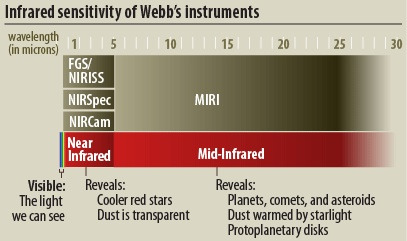
Fun and games with infrared
Specifically, the JWST is an infrared telescope, designed to collect light that's redder than red. The two dedicated imaging instruments are the Near Infrared Camera (NIRCam) collecting light from 0.6 micrometers to 5.0 micrometers and the Mid-Infrared Instrument (MIRI) collecting light from 5.6 micrometers to 25.5 micrometers. (Though with significant light collected past 25.5 um by filter F2550W)
The wonderful thing about infrared astronomy is that everything emits blackbody radiation, and the hotter it is the more infrared it emits. The unfortunate thing about infrared astronomy is that everything emits blackbody radiation, including your telescope, and self-emission from your telescope can swamp the faint signal from astronomical sources. (Like building a camera out of glowsticks.)
The equilibrium temperature for an object in Earth orbit is about 300 Kelvin. (26C) Everything on the other side of the sunshield passively cools down to 40K, and MIRI is actively cooled by the cryocooler down to a chilly 6K (-267C, -449F) This extends MIRI's seeing range deeper into infrared.
But the mirror is still warm! At the far end, MIRI is significantly compromised by thermal self-emission: (Note log scale!)

This is more graphically illustrated by one of the MIRI commissioning images:

Check out that background glare!
(This is somewhat unfair: the calibration target here is a star, which emits comparatively little light in far-infrared. MIRI is really meant for nebulae and extra-galactic high-redshift objects)
("Why not actively cool the mirror?" Mechanical cryocoolers operate on the very limit of what heat engines are capable of. The MIRI cryocooler draws a fat 180 watts to move 78 milliwatts of heat. Previous infrared telescopes used a fixed amount of expendable coolant (liquid helium or solid hydrogen) to cool the entire instrument package... at the cost of a much smaller primary mirror and a telescope that flat out just stopped working when it ran out of coolant.)
There's something else you might notice about the above series of photographs...
Thanks a lot, Lord Rayleigh
John William Strutt, 3rd Baron Rayleigh was a typical early physicist in that he has a great big pile of "discoveries" by virtue of being the first person to 1) notice something and 2) actually write it down. One of them is the fundamental theorem for the angular resolution of an optical system, the Rayleigh criterion. It is dead simple:

Resolution is roughly equal to 1.22 times the wavelength of the light you're looking at, divided by the diameter of the aperture. Bigger the opening at the front of light bucket, the higher the resolution. Smaller the wavelength of light, the higher the resolution.
(Fun fact: the former Arecibo radio observatory, once the largest single telescope in the world with a 305 meter wide dish, had about the same angular resolution in radio waves as the human eye does in visible light.)
You can imagine the effect this has on an infrared telescope. And sure enough, in the user documentation for the two imaging sensors, it states a pixel scale of 0.031 arcseconds for 0.6 to 2.3 micrometers light wavelength, 0.063 arcsec/px for 2.4-5.0 µm, and a squishy 0.11 arcsec/px for 5.6-25.5 µm.
But this is just how many pixels are on the detector. The resolution gets much worse at long wavelengths, as you can see in the commissioning image, where the extra pixels oversample a progressively vaguer blob. The Rayleigh criterion holds that the 6.5 meter wide JWST primary mirror should manage 0.206 arcsec at 5.32 µm, falling to 0.42 arcsec at 10.85 µm, 0.747 arcsec at 19.29 µm, and an unfortunate 1.014 arcsec at 26.2 µm. One wonders why the designers went to heroic lengths to cool MIRI down to 7 kelvin, instead of using that cryocooler mass and power budget for more detector surface area.
Knowing this, you can spot how the JWST's press team works around the limitations of the telescope. Like how a "look at how good our infrared telescope" commissioning photo happens to use the 7.7 µm mode:

Or how if you browse the photos on the webbtelescope.org site, you will see lots of NIRcam output in the "oooh, ah, new desktop background" category, but not so much MIRI.
(Another amusing detail of MIRI is that bright objects leave afterimages ("latents") on the sensor, so once a week they warm the sensor up to a tropical 20 kelvin before cooling it down again, a "MIRI anneal". You can see when anneals are performed, as well as what the telescope is looking at right now, by viewing the public schedule.)
But this is Webb operating right up to its full specifications. How about something that's actually broken?
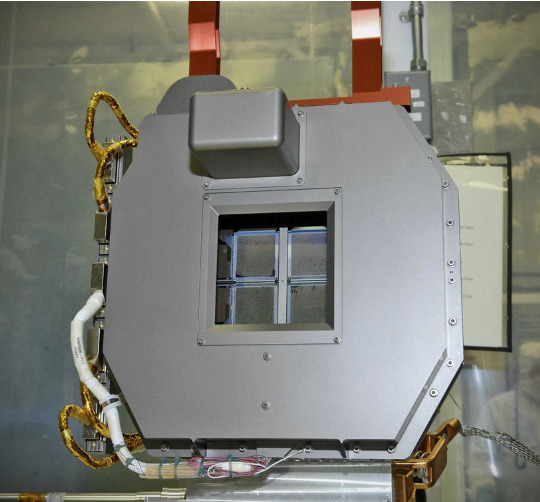
NIRSpec my beloved
The Near-Infrared Spectrograph (NIRSpec) instrument takes incoming light and runs it through a diffraction grating to produce a spectrum. When scientists say that the Sun is 0.77% oxygen, 0.29% carbon, etc, it's not because someone flew a spacecraft over to it and collected a bucket of solar plasma, it's because you can look at the absorption lines in the spectra to figure out its composition.
Spectrometry is also used to measure redshift, a close proxy to distance. When a press release says that a galaxy is "ten million lightyears away", it's not because NASA has a really long tape measure they haven't told anyone about, it's because a spectrometer measured how much cosmological redshift has moved a spectrum line. Naturally, it's not quite as easy as pointing a sensor at a object and getting back a single, unambiguous result. Distant objects are also dim objects, so the spectra will be noisy and chewed up by dust and other contamination its endured in the millions of years its traveled to arrive at our telescopes. Bleeding edge astronomy is thus the practice of designing statistical models to fit to noisy, fragmented data, and then arguing with other astronomers about r^2.
In any event, it's a handy thing to have on a telescope. Naturally, JWST has more than one. In fact every instrument has a spectroscopy mode. Besides the dedicated NIRISS and NIRSpec instruments, both NIRcam and MIRI include diffraction gratings in their filter wheels that smear out incoming light, like looking through a prism:
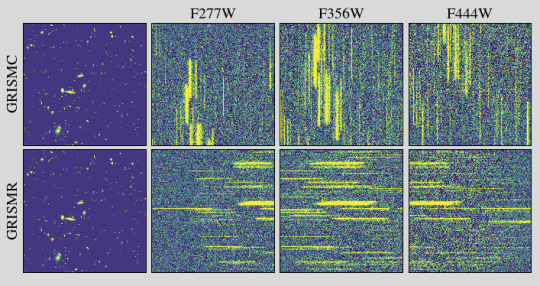
Pointing the JWST at an object is relatively expensive, since it requires rotating ("slewing") the entire darn spacecraft, and an amusingly complex alignment procedure with the fine guidance sensor and fine steering mirror. Considering how long it would take to shoot a hundred spectra with a conventional fixed slit rigidly mounted to the telescope frame, you can see the appeal of gathering a hundred spectra in a single exposure with "slitless" spectroscopy.
(Longtime space telescope nerds might hear the word "slewing" and involuntarily twitch, recalling that the reaction wheels and gyroscopes were a problem point on the Hubble, requiring several servicing missions, and also significantly affecting operations on the Kepler space telescope. Fortunately, JWST switched to a gyroscope type that has no moving parts, and used some mass budget to install six reaction wheels, up from Hubble's four, giving it three spares.)
You can also see the big downside in the image above, which is there's a hard tradeoff between how long a spectrum can be (and thus its resolution!) before it'll overlap its neighbors and be useless. Most of the slitless modes therefore have two gratings at two different angles, (GRISMR and GRISMC above) but wouldn't it great if you could just block out all that other light?

Thus, the Micro Shutter Array, as seen above. The best of both worlds! Capture many spectra at the same time, while blocking off light you don't want from contaminating the field, using a configurable array of nearly a quarter million microscopic, individually actuated moving shutters.
Lots and lots and lots of tiny little moving parts, installed in the guts of a spacecraft that's orbiting out past the Moon, impossible to access or replace.
Yeah, a bunch of them broke:

When it was handed over to NASA for installation into Webb in 2007, the MSA already had 150 shutters that no longer responded to opening commands in just one of the four submodules.
By the time JWST emerged from commissioning and was declared fully operational in 2022, 15,893 shutters, 7% of the total, had "failed closed." Hilariously, 904 of those failed during post-launch testing, and the authors of that paper note that, on average, if you tell 100 shutters to close, 4 of them will jam shut and no longer work.
This is unfortunate, but fairly easy to work around. What's worse are the shutters that are stuck open:
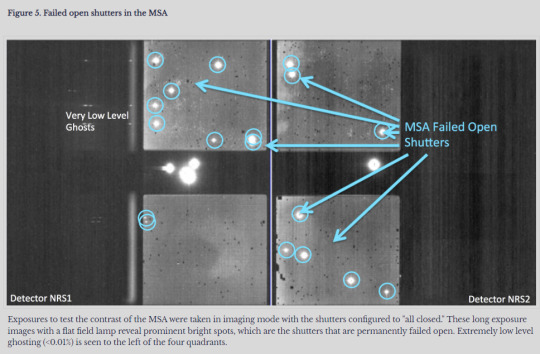

These permanently open shutters then compromise big chunks of the sensor. Commissioning testing jammed two more of them open, taking the total up to 22. You can imagine that if a few dozen more of these fail-open during routine operation then the entire microshutter array observation mode won't be much more useful than regular slitless spectrography.
And this, right here, sums up the essentially "interim" nature of JWST. After all, it was only supposed to cost $500 million and take a mere nine years from design to launch. All becomes clear in that light. Why give it a shutter array that falls apart in use? Why have the mirror exposed to space, where it gets hit with micrometeoroids? Why only design it to carry ten years worth of fuel? Because it was supposed to be half the price of Hubble!
The 90s was the era of "faster, better, cheaper". JWST was going to be an incremental improvement on a long series of previous infrared telescopes, and a stepping stone to the next one. It wasn't supposed to be an eternal monument to Science, and a financial black hole consuming NASA's entire budget.
So what went wrong?
We shouldn't have built one JWST.
Those 344 single points of failure. Any single one of them can end the mission. There's just one telescope, no backups, no trying again. Bureaucrats are harshly punished for failure, lightly rewarded for success. It's always easier to wait, do more tests, delay the schedule a bit more at a hint of trouble. Engineers can get you to 90% reliable no problem, but getting to 99% reliable takes another decade and nine billion more dollars.
Our techne is just bad at producing flawless machines first try. For the price of one reliable JWST we could have put twenty into orbit... but the first five would have been embarrassing failures. Spars sticking in place, sunshields jamming, thrusters misfiring. To save the shame of $0.5 billion wasted, NASA happily spent $9.5 billion. Why not? Because money spent is invisible, but failure is painfully apparent.
A critical third party can draw unflattering parallels. The crowning achievement of NASA, the Moon Landing... required eleven Apollo launches and twenty Surveyor launches before a single man set foot on lunar regolith! Quite a few of those spacecraft pancaked into the Moon and exploded on the launchpad before we figured out this "space" thing. Three men died! But NASA was on a hard deadline, with a fixed budget, and the only way to get a home run is to take a lot of swings at the ball.
Another comparison is the Space Launch System, NASA's attempt to make the Saturn V again. So far $27 billion has been lit on fire to put exactly one test load into orbit, with the primary contractor now desperate to get out of its contact. Slow, careful, incremental development has completely failed to produce a working launch system.
Meanwhile, SpaceX produced a series of public, embarrassing failures... resulting in the world's only reusable launch system, and as a result has put far more mass into orbit than any country in the world.
The only way to develop a flight system is flight tests.
Space telescope deploy mechanisms meant to work in zero gravity can't be tested on the ground.
They can only be tested in space.
NASA administrators who didn't work during Apollo are too stupid to understand this. Fire them all!
These geriatrics have happily sacrificed science in order to play it safe and secure their own easy retirement. Do we want 15 risky JWST telescopes by 2010, or do we want one reliable one by 2022? The answer is obvious!

For the money we wasted making Webb more reliable, we could have launched a space telescope far outside the disk of dust in the inner solar system, allowing it to see deeper into space than Webb ever could. ESA put an astrometry space telescope just outside Earth orbit, measuring angles between stellar objects, which is the only way to directly measure the distance to the stars. Great first step. The obvious next step is to send more of these telescopes out past Neptune's orbit, to capture better observations with a vastly larger baseline, something that can never be done by an Earthly observatory. Are there any plans to do this? No!
Space exploration is paralyzed by boomers, mired in the mental tarpit of the 1970s, where each gram to orbit is terribly expensive and must be counted on punched cards and summed with slide rules. Meanwhile, SpaceX Starship is on its way to orbit, and each one can carry sixteen JWSTs with room to spare!
The old paradigm is done. Telescopes don't need folding mirrors and exotic materials, they need to be mass produced. There is no excuse not to have a hundred more JWST-class telescopes lined up next to the Texas launch pad waiting for Starship to come online. But as far as I know not a single space mission even mentions it-- that's how afraid they are of risk!
The JWST, with its myriad of fragile components and its staggering price tag, stands as a monument not to our ingenuity but to our inability to let go of outdated ideals.
We must abandon the notion that space is a realm reserved for the flawless and the infallible. Instead, we should embrace the chaos, the unpredictability, the sheer messiness of exploration. Let us launch a thousand telescopes, each a patchwork of parts, each destined to fail in its own spectacular way. For it is only in this embrace of the ephemeral that we can find out what actually works!
Let the JWST be the last of its kind, a relic of a bygone era. The future is unwritten, and it is ours to fill with a symphony of failures, each note a step closer to the stars.
278 notes
·
View notes
Note
i know the answer should be obvious, but im curious ...
But there any feminine/female computers ?
Sorry about dropping an ask about the puter men again
Yes! There's quite a few computers I have basic ideas for but just haven't drawn yet.
To start with, IBM 1401! She's one of the few fully operational and interactive pieces at the computer history museum currently, so I think she'd have kind of a teacher's spirit. However, she is pretty mischievous when not on the clock.
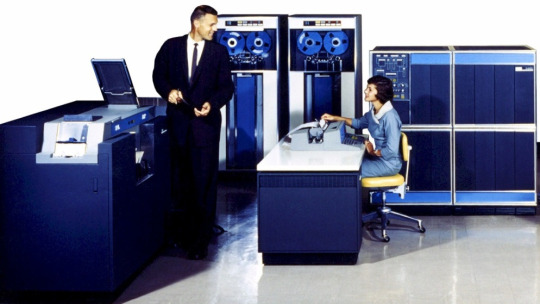

Next would be IBM 650. She's married to 705, and their kid is the 7070! (Because this one was specifically made to take over for those two and yet couldn't read what either of them could and completely flopped </3) She's a bright and cheerful worker and she also has roller skates since the computer itself is on wheels.

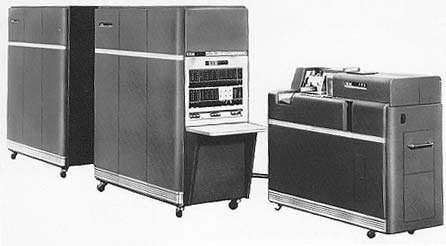
Next is IBM System 360. The absolute top of the game, she's basically the leader of all things IBM mainframes up to the 70's. Iconic, flashy, and a powerhouse of compatibility, she can do more than most of the others can and she knows it. She's strict but in that way that's necessary to keep everything running smoothly. Everything would just about fall apart without her, and she and Univac 1 are forever locked in a rivalry.
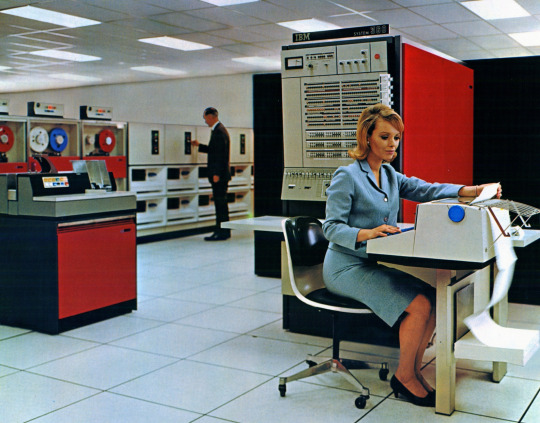
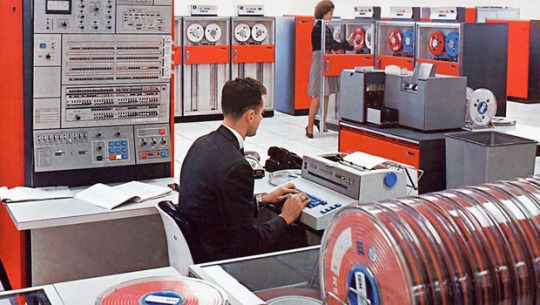
In addition to this, her successor System 370 is actually much more mellow and laid back. She does things a lot quieter, but with more efficiency. She finds 360's manic anger almost endearing and the two have coffee together often.

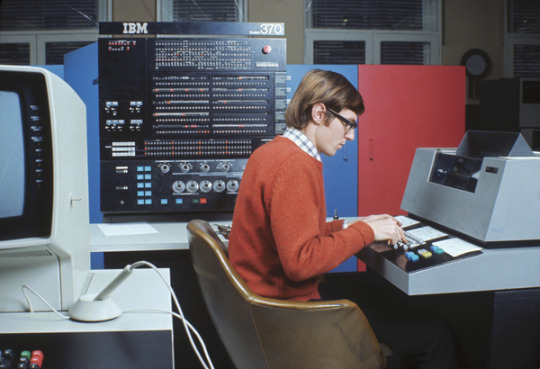
Now for IBM 1620 or CADET! Honestly need to research more into this one but she's very fun.
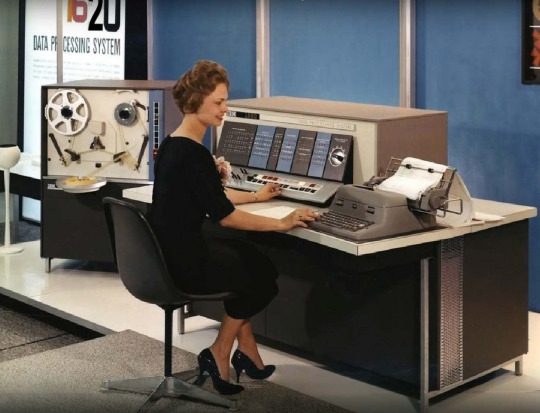
Now Maddida is a little wild, she's very much all over the place and curious about everything. I always saw her design with messy hair, a silver hat, and a flower hairband because of the pieces of the computer.
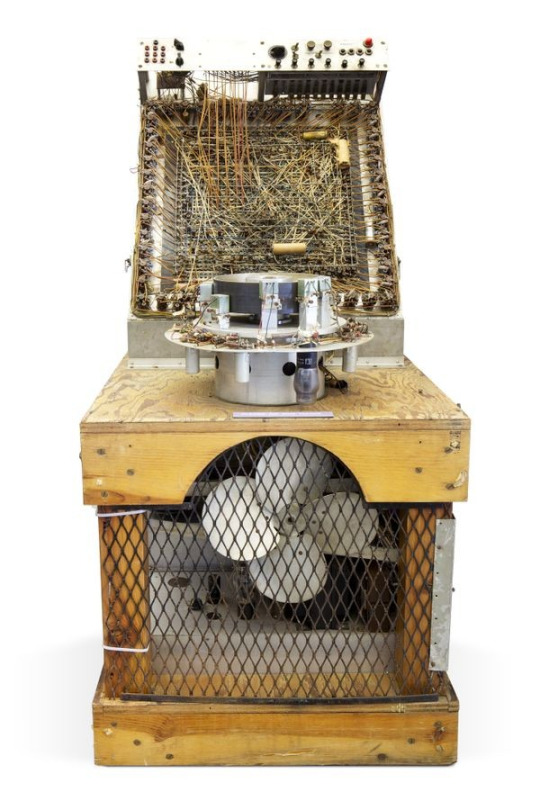
Now for a kind of famous one again, the Illiac! Illiac was the first computer to actually write music! Her twin is Ordvac and the music she made can be found below, played by an orchestra!
youtube
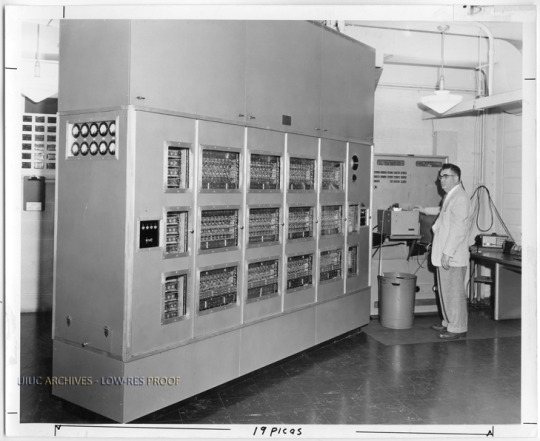
That's all I've decided for now but there will be more later!
11 notes
·
View notes
Text
You know the posts that periodically make the rounds that say something like "I don't support monarchy as a system except when it comes to Aragorn"?
I don't actually feel that way about Aragorn, in either the book or films (though I much prefer the book character). But I have some sympathy because I very much feel that way about Attolia Irene.
When I read The King of Attolia last December, I was impressed by a lot of things, but the overriding one was that I was deeply invested in the political success of a pair of monarchs. I didn't love it quite as deeply as The Queen of Attolia, mostly because I do not love Eugenides (or anyone) quite as much as Irene, but he's still a fun and deeply engaging character and I was actively rooting for his triumph for the duration of the book.
It's also handled deftly enough that it doesn't feel like I'm being expected to idealize monarchy itself, though—it's more the system that these characters are operating within and around. Costis as the dominant narrative voice helps carry it off, to be sure, but nevertheless, it felt like it was very smoothly done.
#i also feel this way about tolkien's ruling queens in fairness to him#but that also feels less idealized and intensely monarchist than his handling of aragorn#tolkien insisting that aragorn's reign is perfect and glorious and kinda imperialist but in a merciful way: ...#tolkien talking about tar-ancalimë using royal status as a cudgel against her awful husband: HELL YEAH#if irene were idealized aragorn-style i don't think she'd work for me nearly as well but the mixture of awe and pride and dread around her?#sublime#also the dance was great#isabel talks#isabel recommends#text: the king of attolia#text: the queen's thief#text: lord of the rings#ch: attolia irene#ch: eugenides#ch: aragorn
15 notes
·
View notes
Text
“The closest that most of us come to a direct experience of the centerlessness of capitalism is an encounter with the call center. As a consumer in late capitalism, you increasingly exist in two, distinct realities: the one in which the services are provided without hitch, and another reality entirely, the crazed Kafkaesque labyrinth of call centers, a world without memory, where cause and effect connect together in mysterious, unfathomable ways, where it is a miracle that anything ever happens, and you lose hope of ever passing back over to the other side, where things seem to function smoothly. What exemplifies the failure of the neoliberal world to live up to its own PR better than the call center? Even so, the universality of bad experiences with call centers does nothing to unsettle the operating assumption that capitalism is inherently efficient, as if the problems with call centers weren’t the systemic consequences of a logic of Capital which means organizations are so fixated on making profits that they can’t actually sell you anything. The call center experience distils the political phenomenology of late capitalism: the boredom and frustration punctuated by cheerily piped PR, the repeating of the same dreary details many times to different poorly trained and badly informed operatives, the building rage that must remain impotent because it can have no legitimate object, since – as is very quickly clear to the caller –there is no-one who knows, and no-one who could do anything even if they could. Anger can only be a matter of venting; it is aggression in a vacuum, directed at someone who is a fellow victim of the system but with whom there is no possibility of communality. Just as the anger has no proper object, it will have no effect. In this experience of a system that is unresponsive, impersonal, centerless, abstract and fragmentary, you are as close as you can be to confronting the artificial stupidity of Capital in itself. Call center angst is one more illustration of the way that Kafka is poorly understood as exclusively a writer on totalitarianism; a decentralized, market Stalinist bureaucracy is far more Kafkaesque than one in which there is a central authority. Read, for instance, the bleak farce of K’s encounter with the telephone system in the Castle, and it is hard not to see it as uncannily prophetic of the call center experience.” ― Mark Fisher, Capitalist Realism: Is There No Alternative?
28 notes
·
View notes
Text
but yeah thank you for enjoying Leigh Stasik The Cannibal Postfighter (gender neutral form of postman) And Her Wacky New Vegas Journey. glad to have shared it with you. but now, heres the thing. i find that the independent route in particular really really suffered from the game ending up somewhat unfinished and with a lot of cut content and reduced factions. the whole "chaos ensued, everyone was on their own, until shit finally calmed down thanks to the securitrons" - well i dont think its good enough. like ive mentioned before, in my head there exists a better version of the independent new vegas route, and the basis of it is properly uniting various scattered factions to form a coalition of support, respect, and building a better future. those are (putting shit under a readmore cuz i ended up rambling a lot):
- the followers of the apocalypse, obviously. i actually think its odd that when you talk to julie farkas right before hoover dam, shes like >_> uhh why should i support an independent new vegas, new vegas is so sucks with how all the poor people get locked outside with so few resources... girl?? like this has to have been a very haphazard way to patch the whole 'this was supposed to be a major faction' thing but like. new vegas isnt just the strip... new vegas is the strip, freeside, outer vegas (westside et al), all those semi-populated areas around it, and by all account all territory east of the red rock canyon, west of the colorado river, south of the northern passage, and north of the mojave outpost, which I'm Told is on the border between the new vegas territory and the ncr LUL... and besides, obviously ncr and the legion and mr house are not options with any intent of dismantling the inequality. like i think the response was meant to specifically regard a scenario where the courier just ends up holed up in the strip with all the securitrons, without making any effort to ally themselves with local factions, and without any regard for the people... but again, I Am Not Satisfied With That. girl i got the idolized reputation and then joined the followers For A Reason..... im too lazy to check but does she have something else to say if you have a very high reputation in freeside? oh well WOTEVER. the followers of the apocalypse. theyre part of this.
- the kings. also somewhat obvious. they caare about freeside... i think given more resources and without the ncr crawling about annoying them they can really start to improve things and keep the place reasonably peaceful. The Local Elvis Impersonator And Gay Ass Greaser Community Government
- the outer vegas, especially westside. it really is great that theyve got their own co-op farms and a militia protecting them, and now imagine what itd be like if they werent being pushed away into a small run-down area with shit falling apart and very little land to cultivate. hey guys all this farmland south from freeside that the ncr had been hogging? When We Join Forces, It Is Ours, Meaning Its Yours. the water infrastructure, the crops, the storage. now were gonna need more engineers to keep up with maintenance but heres the thing: the ncr had been snatching up all locals with any kinda engineering know-how to help with Their infrastructure, but now theyre not here anymore. theres Plenty of repair people, handyfighters (gender neutral form of handyman), engineers and so on, scattered all over mojave, some of them doing fuckall, and much more people that could be taught such things and contribute. we can get shit running smoothly and im not just talking about the irrigation systems and so on. with the helios one fully operational and sending power to freeside and outer vegas, with greatly improved freedom of movement... girls we can get it all running. also! the sewer network? can we talk about the robust sewer network and the people just straight up people living in there underground. baby, we can make that a good place to live. rent free of course. and it could be used for transportation, too! guys... we are tapping into this potential. and we are gonna vastly reduce stink and smell levels, to help prevent the spread of disease. actually yeah theres a lot that could be done just by improving the hygiene around here, now that the ncr isnt hoarding all the water. less stink and smell, less disease, better access to medical care... oh baby!
- jacobstown! i was actually Elated to see the ending slide saying dr henry found the cure for the nightkin. the ncr were largely responsible for exacerbating distrust of the super mutants and trying to cause hostility, and without them around... i believe Peace And Friendship with the rest of new vegas is possible. of course i imagine many would prefer to stay in jacobstown, what with it being The Super Mutant Establishment And Safe Haven, but yknow. i bet many would like to go out there and live among people. like that guard in westside. imagine the possibilities. education and opportunities would be provided, distrust mended. hell, black mountain could also be a peaceful super mutant establishment, with treatment provided to the nightkin living there, and neil taking on a marcus type role there. the area would need a Lot of work, but hey, with super mutants no longer being pushed to the absolute furthest margins of society, i believe a lot can be achieved.
- yes man and the securitrons obviously. Now. i really dont care for making them the sort of aggressive militaristic police force that mr house wanted them to be. i believe, of course, in using them as a sheer Force against the legion and the ncr, to drive them away and keep them away, and to protect the continued independence of the region. i also think that early on they might be necessary in kind of temporarily filling in the gaps left behind by the ncr, to prevent chaos and aid in a smoother reorganization wherever theres not enough people to run things. there are many good ways for securitrons to contribute, and indeed this is true of all sorts of robots that used to languish in old factory buildings or protect mr houses property. robots can be understood better and given the opportunity to become citizens--dude theres lots of robots with feelings and free will and so on, and while i recognize its just a kinda scifi trope thats rarely given that much nuance, well! We Can Do Better. allow robots to hang out. allow robots to advocate for themselves. allow robots to have their internal lives acknowledged. allow robots to seek happiness and entertainment. allow robots to be chilliiiiinnng 👍
- ex-ncr. listen. theres some good folks in the ncr and lots of people who got Fuck All in return for their service and have every reason to turn their back on it. the folks who got pretty much stranded at searchlight, stuck sitting next to an irradiated town and just telling people not to go in? the people looking after refugees at bitter springs--what, five of them? guarding the entire refugee camp, completely exposed to any legion raid that chooses to take a swing at them, no reinforcements or extra supplies coming unless a Local Celebrity runs around ncr centers and begs people to send anything? camp golf? and so on and so forth. dude. the new vegas campaign is a very unpopular war. the ncr back home dont rly gaf. all over the mojave lots of people signed up just because they didnt think there was any other option, and they wanted to make a difference. theres people being given orders from the higher ups to wreck entire communities, and well They Dont Wanna Do That. well tell you hwhat folks. quit. if youre about to get your paper renewed, dont. if youve got more time on your contract, fuck it, disregard that. the ncr go around losing entire squads and never finding out what happened. You Can Leave The Army Today. You, Too, Can Betray The New California Republic. ask not what you can do for the republic--ask what the fuck ever the republic has done for you. and if it has done something for you, ask if it couldnt have been done better and sooner if the actual interests of the ncr didnt lie elsewhere. reach out to your ptsd-ridden colleagues. reach out to your exhausted, dissatisfied neighbors. think about, for all the Civilized Customs that the ncr has supposedly brought along, all the bigotry theyve been spreading In Here, On This Land, Like Its Theirs. no! You Can Stop Being A Bootboy Today. you can put your talents and courage and good will to better use. look at my friend boone here. you see him? do you know what he got from the ncr? PTSD, Complicity In Atrocities, debilitating guilt, bald head in his 20s, and an overwhelming sense of doom. do you know what he got from ME, the leading voice of the independent option? emotional support, a chance to protect the communities the ncr wanted him to destroy, friends, career opportunities, enrichment, epiphanies, a chance to kill a buncha fascists, a near-endless supply of nuka cola, a bunch of knives, a teddy bear, and more! thats right. thats right. ditch the ncr. join us. folks, this is the way to go.
- ghouls. wonder what should be done about the irradiated areas? how about letting ghouls, who thrive in radiation, create their own settlements. peace and quiet. because, listen. deprived of communities, pushed to the margins, left to roam the most desolate areas, the odds of ghouls becoming feral are frighteningly high in the mojave. we know from harland that there just arent many places for a ghoul to hang out around here if they want some semblance of a community, besides enlisting for the ncr, which is an unpopular choice. thats why he opted to join the bright brotherhood, and i just think folks prooooobably deserve better than a religious cult that ended in mass suicide. anyway. radiation provides an easy barrier against most threats from the outside. necessary supplies can be delivered to the new settlements by robots and properly equipped workers. ghouls are ancient. among ghouls are some of the finest scientists and historians. ghouls can work with technology languishing in areas too irradiated for humans to delve into. can you imagine the technological progress that could be achieved in such settlements? but also chilling. lots of chilling. chilling.com/careers. the ghouls shall be chillinnnng 👍
the boomers and the brotherhood of steel are reclusive and dont wanna deal with outsiders--hey thats okay, do what you want, live and let live, just Dont Start Shit and also know that you have options. no offense to the brotherhood but you love sending patrols into the mojave and losing them to enemies and situations, so i dont think going to war with the new government is something you wanna do. you dont have the range. you dont have the giant robots. and well, good. that makes you more likeable actually. i hate those guys with all that liberty prime vertibirds rockets type bullshit going on. buncha smiling fascists. who do they think they are. whatre you doing that for. bye.
so yea. thats my Independent New Vegas Coalition. and the first step to truly unifying those factions Before the second battle of hoover dam, before ncr's retreat? showing them that united, together, we can do things that the ncr cannot. and what would that be you ask. simple. killing caesar. storming the fort, releasing the slaves and hostages and ensuring their safe journey to new vegas where theyll be looked after, and executing baldie via firing squad. thats right. thats right. no one from the ncr has even been inside the fort but i have. i know the layout. i know the weaknesses. i know the terrain. i know how theyre connected to the west and to the east. and guess what. thisll help us in the long run in many different ways, not just the obvious "caesar is dead yayyy" way. easier to deploy securitrons from the bunker under the fort if theres no legion about. oh thats right! weve got securitrons in there, folks. neat isnt it! like i said. doing things the ncr cannot. why would you look at that, kimball, oliver, all the other fools. hows that war with the legion going for ya. oh whats that? caesar is dead? oh yes. and it wasnt you guys who did that. we did that. so i just think its really funny how... um... weve got this. go home. or else take that taste the pain
12 notes
·
View notes
Note
How do u like jellyfin? I've been using kodi since i've been looking for something more featured than VLC for browsing media but it feels bloated and makes wayyy to many internet connections automatically for me to really enjoy it or feel safe running it on any device that seeds torrents. I'm strongly considering jellyfin since I despise plex and ember is proprietary.
It’s the only media server software I’ve ever used, so I don’t have any points of comparison. Also, a transparency preface, the device my server is hosted on is an M1 Apple iMac that's running up-to-date macOS (as of the time of writing, that’s macOS Sonoma 14.1), so as always, your mileage could always vary on other operating systems and chipset architectures.
I also view content exclusively via the iOS app, Apple TV app, and Firefox for Linux x86-64, all of which I’ve never had a problem with.
For the most part, however, I haven’t had any complaints. I keep all of my content on a 2TB USB External HDD that I bought from Walmart. It stays plugged into the computer 24/7, and all I had to do was tell Jellyfin where the files were, which you have to do regardless of where they are.
I’m not an advanced user by any means. I’d love to get outside network support going, but even that is proving too intimidating for me. I probably don’t take advantage of most of the advanced features, either. From my experience with Jellyfin, though, it does what I wanted it to: allow me to view my videos and photos without having to download them onto my phone. I have three users set up (including the one mandatory admin profile), and that’s probably the most non-out-of-the-box thing I’ve done.
The only issue I’ve had is that if your host device loses power (or somehow force shutsdown or crashes without first properly quitting the Jellyfin app) during a library sync (which can take a long time if you’ve added a lot of data at once and are running it off an external HDD), the on-device database file seems to corrupt easily. When this database file gets corrupted, it makes the Jellyfin app panic and shutdown without actually closing the app. As a result, the app looks like it’s running properly, but when you try to access it from anywhere, it’ll fail to load. You have to check the .txt file logs to actually see the panic code and shutdown command. I’ve had that happen twice, and it isn’t very pleasant. Luckily, I also use macOS’s Time Machine feature, so I had plenty of backups. However, it is annoying to have to sort that out, and if you didn’t have backups, you’d basically have to restart the server from scratch. Your content would be fine, but all of your manual IMDb data, custom thumbnails, reported file locations, etc. would be factory reset.
Of course, if you’re running the server on something with a backup power supply or a built-in battery, that eliminates a lot of the risk. The iMac I run my server on also acts as a secondary computer, for me. So I'm also at a heightened risk of crashing and whatnot. If you had a dedicated server computer that did nothing but act as your Jellyfin server, that'd also probably help alleviate some risk.
The extent of my daily use of Jellyfin is constantly playing ambient music from an old iPad next to my stereo, and occasionally viewing images and videos from my phone or laptop. I’m certainly not a power user, but for me, I’ve never had any reason to dislike Jellyfin, so I don’t exactly have a desire to go looking for an alternative. It does what I need it to do, and it does it smoothly, simply, and reliably.
If you're looking for a more advanced user's opinion, however, I'm afraid you've come to the wrong blog.
13 notes
·
View notes
Text
𝙱𝚕𝚞𝚎𝚙𝚛𝚒𝚗𝚝𝚜: 𝙿𝚝.𝟺

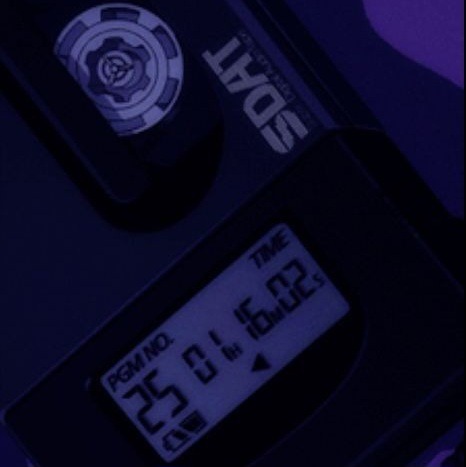

9:35 pm.
After a few days of straight planning, they finally had everything planned and ready to go. Seonghwa especially had everything sorted. Everything was placed where it needed to be. The way into the 5th floor was mapped out, and all they needed was to actually be on the road and get going.
Each one of the boys had their things ready to go; Jongho was to be stationed on top of one of the buildings, Wooyoung was to greet the man in charge, San and Mingi were there to make sure Wooyoung wouldn't get hurt, Yeosang would be in the van, making sure there were clear ways for them to get out, Yunho is driving the getaway car and Seonghwa would actually be grabbing the implant from it's stand.
Hongjoong made sure he would be nowhere near the site. He couldn't be seen out in public.
They all had their artillery set and ready to go, all suited up in their holotech undersuits (developed courtesy of Yunho - experimental, very dangerous) and whatever else they wanted to wear for this operation. The skin tight suits were perfect to keep them safe as they were near indestructible - keyword, near.
Each of them had been ready to get going and were sitting in their black van, waiting on the second-in-command to get there. It was silent besides San and Wooyoung whispering amongst themselves. Wooyoung, of course, was sitting in his lap. They must've been muttering about Wooyoung's partner, as when Seonghwa came out, Wooyoung was blushing and very audibly said an "I can't wait to see him after this."
Once everyone noticed the man standing there, looking between each of them silently, they all got into their designated spots. No words were exchanged between anyone as they mentally prepared for how intense this job would be. Seonghwa was the last one to get into the van, finally sighing before putting head against the passenger seat headrest.
"Let's get a move on." He murmured to Yunho, letting his eyes shut.

10:42 pm.
Seonghwa didn't open his eyes until the car came to a halt, and his holo acted as sunglasses, reflecting the shining ball of gas back out. The drive wasn't long, but they were getting ready. "Time to go, then." He said to himself, readying himself to go to the back of the truck and start the brief.
The brief was - well, brief.
It was enough to set everyone in motion to make it run as smoothly as possible, and each stealth member had to make sure Seonghwa could get in and out of the vents without being seen.
Everyone had made their way to their positions after the little meeting. Everything had to go perfectly to acquire this little piece of machinery.
At 11:00 pm, they'll make their moves. At this point, Seonghwa was fitted in his suit, and using the forged ID cards to get in, he nodded to that same receptionist who was macking on Wooyoung when they first planted the weapons. He made his way all the way up to the fourth floor, only to then take the stairs up to the roof, which was only three flights up. Through there, he would go through the HV/AC system and down into the ceiling. The workers usually take a break around 11:10, so getting in and out would be so simple when he can be alone; easy to grab the implant, put it in his bag, and get out of there.
He got the okay from Jongho, who was looking through his scope on a neighbouring building to start going down, so that's exactly what he did. He started lowering himself through the unit after connecting the rope to a side roof anchor.
10:59 pm.
'Now or never, Hwa.'
✘✘✘✘✘✘✘✘✘✘✘✘✘✘✘✘✘✘✘✘✘✘✘✘✘✘✘✘✘✘✘✘✘✘✘
New runners?: @beastfights-starting (🐉) @k-venturetime (👑) @thepatchedpaw (🔮) @redlight-cb (🚨) @mxthxbot (🌊) @kingdom-of-dicentra (🐺) @theonesxcb @mutant-academy @clubwnderland @supernaturalcb @kim-theo-oc @k-half-blood @namiras-rose-tattoos @ocmyths @your-au-boys @yourocboys @ateezmystery @undercoverxcb @evicted-oc @onlyomega-cb @welcome-to-maniac @domxbot @reve-rv @eclipseclubocs @urtwice @sirenaquariumcb @bluerosemafiacb @divineblood-cb @kitakcb @boyzplanet @weeb-wonwoo @hideawaycb @thegoodplace-oc @purgatoryxbot @project-takeover @fantasyxkingdoms @teyvatcb @theinvitation-bot @wolfpackcb @dawnswonderland-entertainment @livealittleoc-cb @lunarcoven @theafterlifeclub-cb @chnchoi @kmxchaewon @screamcb @3rachabot @redlights-speakeasy @kq-rescuecenter
#blueprint#seonghwa.plans#yunho.packs#yeosang.watches#san.slings#mingi.runs#wooyoung.talks#jongho.shoots
25 notes
·
View notes
Text
I’ve been meaning to put into words some of the concepts and headcanons I have for the System (or at least a canon-divergent AU).
The System is the celestial organization in charge of assigning wastelocks and deciding when a flusher is necessary. It consists of a group of Operators who oversee the balance of the universe. There are four Operators that all play their own part in the shaping and choosing of wastelocks.
The System is primarily ran by Operator Edgar Vargas. He is responsible for ensuring that everything in the System runs smoothly. Operator Vargas has been alive since the beginning of time and is a near immortal being. Despite being a sort of deity, he does partake in human and alien activities alike.
Side Note: The Edgar Vargas that Johnny saw and ripped to shreds was not real. It was only a hallucination that Johnny had to cope with his increasing anxiety about who he was before when he was an Experiment.
The Operators ensure that a wastelock’s memory is wiped of all details of the System before being sent to their assigned waste cell, leaving only muscle memory intact in order for them to perform their job. Sometimes, things do slip through the cracks as brains are unpredictable and very hard to fully manipulate. To offset this, the Operators do supplant the Experiments with vague false memories.
Operator Vargas takes his position very seriously, and he is constantly researching the best ways to enhance wastelocks and unlock their true potential.
Edgar ends up finding Meekrob and discovering their incredible hyper-go-on powers and life source. He conquers Meekrob before the Irkens can.
Tenn’s body and PAK are found deep in the Meekrob’s holding cells. She is brought back to life by Edgar, and he alters her DNA to possess some of the Meekrob’s life force. She becomes Experiment 710 and is the only remaining wastelock Experiment besides Johnny.
The wall monster is a corrupted version of the Mother Meekrob, the overlord, leader, and nurturer of the Meekrob. It is infused with the element of pure aggression, causing it to develop into the current form of the monster it is.
The doughboys and sickness as well as other parasites are actually corrupted Meekrob as well. Once the Mother Meekrob was corrupted, it infected the rest of the race.
Edgar harvests the Meekrob’s hyper-go-on energy life source to mutate DNA to create the ultimate wastelocks also known as Experiments. Other than Johnny (Experiment 777), none of the other original (701-706-709) experimental wastelocks survived their assignments.
Since Johnny is an Experiment, he has all the properties of a Meekrob, including but not limited to: immortality (they can die but they come back), accelerated healing, limb and organ regeneration, supernatural strength, ability to reproduce despite sex/gender, and manipulation/mind bending (such as in the way they appeared as shoes to Dib in the show).
As previously mentioned, there are four different Operators. Besides Edgar, the Operator of the Red Throne, there is The Doctor, the Operator of the White Throne, who is responsible for testing the Experiments limits to pain, injury, and death. Constantly assessing their tolerance of injury and death acts as a sort of added immunity to both. Their body becomes accustomed to non life-threatening injuries and even life-threatening injuries take a while to fully cause the Experiment to temporarily expire. Such as when Johnny shoots himself in the head and survives for a extended amount of time.
Their tests are often very taxing and invasive and go beyond the usual limits of what wastelocks can handle. They are also responsible for recalibrating Experiments that start to malfunction.
The Operator of the Blue Throne engages in combat with the Experiments, testing their ability to use different types of weapons and best take down their victims. Through a series of battle royale type tournaments, individual sessions, and simulated practice, they ensure each wastelock can kill and kill well.
The Operator of the Black Throne acts as a sort of educator, teaching Experiments about a range of topics from different types of poisons and the history behind the System and the importance of their mission. They also teach the Experiments about how to best select a victim that will prove sufficient to the Creature.
Despite what Señor Diablo said (or perhaps did not say), he is aware of its existence and purpose, but he and God both hold no jurisdiction over the System and cannot be involved in System matters. Hence why Johnny was unable to stay in Heaven or Hell.
Wastelocks are only assigned to be flushers when the balance of the universe is especially tipped in one direction or the other. It’s a last resort protocol that the Operators put in place to keep the universe from entirely being consumed by the Creature/pure aggression. They are the ones that create the back-up of the universe that Señor Diablo mentions.
Initially, the earlier waste locks were no threat to others not charged with the task of borderline reaping, but upon further evaluation, the Operators decided that the best course of action was to perform a sort of population control. They allowed the remaining weaker waste locks to completely dissolve mentally.
Although immortal for the most part, the other Experiments of the 700 line were an unpredictable bunch. Because of the introduction of foreign DNA with their own, they suffered a sort of slow (or rapid in some cases) corrosion, eventually being killed by their own powerful hyper-go-on-infused cells.
Johnny is the only one who survived, being that his DNA has reacted the most stable with the Meekrob’s life source on a molecular level. That’s not to say that he doesn’t struggle with other effects. While it is stable for the most part, it does become unbalanced at random. Part of his madness is due to that constant imbalance and realigning. (I liken this to mental illness being caused by chemical imbalances.)
Probably more to come. Thanks for reading if you stuck around!
#jthm#johnny the homicidal maniac#nny#johnny c#jhonen vasquez#Edgar Vargas#invader Zim#meekrob#invader tenn
7 notes
·
View notes
Text
The role of automation in reducing workplace stress
You might have heard this before – automation will take over your job!
But it’s far from the truth. The very nature of automation is enhancing one’s efficiency and productivity. It was never meant to replace human skills and jobs.
Automation play a key role in helping team members streamline their tasks and enable them to work smarter rather than harder. It is known to bring sustainability in chaotic work environments. And more importantly, make work easier, faster and stress free.
Here’s how automation reduces stress among teams
In the modern workplace, automation can be a key tool to reduce stress and make work easier. By automating mundane and time-consuming tasks (along with their everyday management), businesses can reduce organisational complexity and simplify work for their teams.
Not just this, automation can modernise your everyday work and eliminate hurdles that ultimately cause stress. Let’s dive deeper into how you can overcome these too.

Reduced Human error
Human error is among the major causes of delays and inefficiencies. And the problem with human error is that it’s inevitable. If humans are working in an environment where all operations are handled manually, they are bound to make a mistake every now and then.
Automation allows teams to craft out their work patterns, set notifications, and auto check for errors. This reduces the likelihood of manual mistakes, which lessens employee pressure.
Through automation you can overcome indirect errors as well. For instance, someone on the team forgot about a specific task, or they did not remember the deadline well.
Eliminating these inefficiencies ensures that team members are only focused on getting the work done instead of managing their tasks and deadlines simultaneously.
Reduces Micro management
Having a supervisor and ongoing expectations of results can cause a lot of anxiety. When you closely monitor team members, they tend to focus more on meeting the deadlines rather than actually accomplishing the task to their full potential.
More often than not, micro management prevents team members from thinking innovatively and freely sharing their ideas.
Automation can help you get a clear view on the progress and status of all work. This ensures that you do not have to follow up with your team members every hour to get updates. Further, it creates a space for both managers and team members to think out loud and explore their creative dimension.
Simplify recurring tasks
One of the most mundane tasks are the ones that are repetitive in nature.
Imagine going to work everyday, performing the same 10 tasks, managing them, and then coming back home.
It is not only boring but makes team members unproductive in the long run.
Through automation, you can generate templates for repetitive tasks like sending emails, filing reports, etc. Even tasks like scheduling meetings, and getting follow ups can be automated.
This results in freeing up a lot of your time that was otherwise occupied by managing and accomplishing these tasks. It allows for better time and skill management by letting you focus on solely what’s important.
Further, eliminating your ‘extra’ work everyday can help in substantially reducing stress and anxiety around strict deadlines.

Speed up operations
Maintaining a successful business requires smoothly running your operations and everyday business processes.
However, dealing with disorganised, segmented systems can be challenging. Because not having a system in place leads to inefficiencies and waste of resources – ultimately causing stress among managers and employees.
To increase effectiveness, it’s beneficial to implement automation into your business. With automation, you can streamline your processes and efficiently manage everyday operations.
It takes over the manual management of business operations and aligns your processes to your goals.
Automation has a ‘relaxing’ impact
According to research, 64% team members say that automation technology helps reduce their workload and stress.
The research further found that, “On average, our survey found that people are happy and fulfilled at work, but also stressed. Yet consistently, there is a strong correlation between technology in the workplace and employee happiness and low stress.”
It’s no surprise that stress exists in most workspaces today. But with the right tools, you can overcome it and prevent team members from reaching burnout.
It is your responsibility to ensure your team’s mental well being and provide a stable and productive work environment for them.
2 notes
·
View notes
Text
Enhancing Your Business with Customer Care White Label Services
Understanding the Competitive Environment for Customer Care White Label Services
Customer Care White Label Services has been handling customer support under the name of the company. Outsourced Customer Support Solutions is emerging as apowerful solution for companies who wants to deliver exceptional client services under their own branding. Call2Customers.ae provide tailored customer care white label services for your business, guaranteeing consistent incorporation with your image voice and values. We offer businesses the ability to provide high-class customer services without any operational hassle.
For instance, in the event that you have a developing web-based shopping business, it very well may be difficult to deal with all the client questions as your orders increment. Working with a company that provides ready-to-use services can help. They’ll handle call center solutions for you, making sure your buyers get quick responses, and your clients won’t even realize it’s not your team managing the help.
The Rising Demand for Customer Care White Label Services
In today’s competitive world, many businesses are choosing to outsource their client services to experts while still keeping it under their brand name. This is called white-label customer care. The rising prevalence of web-based shopping, organizations extending all around the world, and clients expecting nonstop assist with having all made these services more in demand. Companies like Call2Customers.ae specialize in providing these customized support solutions.
Why Businesses Choose Outsourced Customer Support
Saves Money
Running your own client support team costs a lot, as it includes hiring, training, setting up offices, and buying technology. Outsourcing lets you skip these expenses and only pay for the help you actually need. C2C offer competitive pricing models that fit different business budgets.
Easily Adjusts to Your Needs
We provide adapting services to client according to clients needs. It allows to grow or shrink depending on your business. Whether it’s a busy holiday season or long-term expansion, they can adapt to your workload.
Expert Help
C2C is white label providers specialize in call center services, so your clients can interact with trained professionals who know how to handle their issues smoothly. We offer reliable and personalized customer experiences that keep customers happy.
Support Anytime, Anywhere
We are open 24/7, making sure your clients get help whenever they need it, which is a big plus for online businesses or those serving clients worldwide.
Technology Integration:
We use tools like AI, and CRM based systems to make support faster and more efficient.
#labelmarketingservices#whitelabelmarketing#whitelabelmarketingservices#whitelabelmarketingservicesinindia#whitelabelservices#whitelabelsrvicesindia#whitelabelcallcenterservices
0 notes
Text
Creating an iPhone application can be a very fun and fulfilling experience. If you're lucky, it can also be a very profitable thing to do, but there are many different aspects to creating an application. The more you know about how it works and what great benefits there are, the better off you will be. To help you out, we are going to cover 8 things that you should know before you start to develop an iPhone application, but before we do, let's take a look at some other extra benefits you may not have know about developing for iOS. Did you know that the Apple app store makes more than double the revenue than Google does with their Android store? This means that if you are able to come up with a great application that sells, it will bring you much more money. iPhone applications are also much easier to test and have much more support for development, which can really help throughout the whole creation process. In general, developing a iOS application will require much less work because the applications only need to fit a few different devices, unlike Android which has so many different devices that it can be hard to create something that will fit them all. So with all of that in mind, let's take a look at those 8 tips. Need A Mac Computer & IOS Device You will always be able to just use the iPhone simulator, but there have been plenty of reports that it isn't the same thing as actually having the phone in your hands. You may end up running into issues if you only use the simulator, then once your finished, upload the application to a phone. If you are serious about iPhone application development, just invest in one. Download The Apple IPhone Software Development Kit This is a pretty large download, but it is well worth it. It comes with all types of goodies to help you create the best application you possibly can. You get access to instruments, framework, Xcode IDE, samples, and much more. Learn Objective-C You are going to need to learn this programming language in order to create a successful application. This language is the main language used by Apple and for the iOS and OS X operating systems. It may take a while to become an expert at the language, but the better you know it, the more effective your applications will be. Plan The Application Out Before You Do Any Work So many programmers have an idea about an application and they just jump on their computers and start programming. While it may seem like that could go smoothly, it won't. You will need to make sure and have a full plan and understand how much time and effort it is going to take to have the entire project finished. You don't want to start, then realize it's too much to handle. Join The IPhone Developer Program Although the program does cost a little bit of money, it can be well worth it in the end. It allows you to distribute you application to a number devices from the iPhone Developer Portal. It makes things much easier. Watch Plenty Of Professional Apple Development Tutorials There are many quality tutorials about every aspect of creating an application, so make sure and take advantage of that. There is no shame in watching a video to make sure you are doing everything correct, every step of the way. Build Reusable Code If you plan on making multiple applications, then you should try and build reusable code so that the next time you decide you want to make an app, you won't need to start from scratch. There is even plenty of free reusable code already available if you want to try them out. Submit The Application To The App Store You should definitely be trying to get accepted into the application store. If you're lucky, you may become rich off of your hard work. Even if you get declined, at least you tried and you will be able to start another application that is better. If you are willing to take all of these tips and implement them, you will see some pretty amazing results from your development projects and could end up making your future work much easier as well.
They are all meant to help you in the long run, so don't be afraid to try them out. If you prefer doing your development process in a different way, then no problem, these are just optional tips, but if you are new to developing applications to the iPhone, you should strongly consider using them. This is a guest post by Ness on behalf of make-a-web-site.com – a site of bloggers and web developers alike. Find out how you can have your own blog, visit their website for more details.
0 notes
Text
Firstly the NES was in 1985, as it's the American rebranding. The Famicom came out in 1983 though and that's about the same hardware so I get you. You can go back pretty far and find most games were 60 fps because that's just straight up what TVs operated on and it genuinely would require more effort / hardware to make something not match that. The Atari VCS was 60 fps, and it had 128 bytes of ram. FPS on older consoles wasn't really dependant on the RAM or CPU, though CPUs had to be clocked to be able to output the right frequency. If you lived in a PAL country like the UK and most of Europe, your consoles would've all been 50 hertz instead of 60, and processors for PAL consoles actually ran slower than their NTSC counterparts. I have both of these consoles (an Atari VCS and an NES), and t's worth noting that a lot of games were NOT very accessible. There weren't any warnings for if the screen would explode into bright rapidly flashing colors or flash white very quickly upon completing an action, etc. A lot of Atari games had sprites that would flash quickly to save RAM by using the RAM to draw something else for a frame. The NES was definitely somewhat better about it. The 30 fps thing seems to have started when actual performance overtook the cost of adapting consoles to a different FPS. Remember almost movies are still recorded and played at 24 FPS, which is even slower. It's a very complex and nuanced thing beyond screwing you out of 60 fps, especially with modern screens and video technology. I do honestly wish though that all software for computers and games for consoles alike were able to run at 60 FPS without any issues on an average or moderately powerful computer / console. There is NO reason, in my mind, that my computer that I JUST bought that has a lot of high power features should not be able to run most games smoothly, like they need to design games to be significantly less intensive, that's a completely new norm. Like you used to be able to expect your computer to just run any software compatible with the system and it would do it perfectly fine unless the thing was rather old. Things can and are expected to move very fast across the screen now so frames matter.
Look, there's a lot to be said about the contemporary gaming industry's preoccupation with graphics performance in contemporary video games, but "no video game needs to run at higher than thirty frames per second" – which is something I've seen come up in a couple of recent trending posts – isn't a terribly supportable assertion.
The notion that sixty frames per second ought to be a baseline performance target isn't a modern one. Most NES games ran at sixty frames per second. This was in 1983 – we're talking about a system with two kilobytes of RAM, and even then, sixty frames per second was considered the gold standard. There's a good reason for that, too: if you go much lower, rapidly moving backgrounds start to give a lot of folks eye strain and vertigo. It's genuinely an accessibility problem.
The idea that thirty frames per second is acceptable didn't gain currency until first-generation 3D consoles like the N64, as a compromise to allow more complex character models and environments within the limited capabilities of early 3D GPUs. If you're characterising the 60fps standard as the product of studios pushing shiny graphics over good technical design, historically speaking you've got it precisely backwards: it's actually the 30fps standard that's the product of prioritising flash and spectacle over user experience.
4K notes
·
View notes
Text
Revolutionizing Warehouse Robotics with 4K USB Cameras for Enhanced Visual Precision

Accuracy is not a luxury in a warehouse setting; it is essential. Every work requires a very high level of accuracy, whether it's negotiating narrow aisles, swiftly identifying packages, or making sure fragile items are handled safely. But how can robotics actually achieve these objectives when conventional vision systems frequently fall short in terms of clarity and detail? A revolutionary advancement in visual technology for warehouse robotics is the 4K USB camera.
The integration of 4K USB cameras in robotics is redefining what's possible in warehouse management. These cameras offer unmatched clarity, efficiency, and adaptability to meet the ever-evolving demands of the logistics industry. Let’s explore how 4K USB cameras are not just a technological upgrade but a strategic advantage in today’s warehouses.
The Problem with Conventional Vision Systems in Warehouses
Conventional cameras, though commonly used in warehouses, often lack the necessary visual quality to provide the high-level precision required by today’s robotic systems. Key issues arise, such as:
Insufficient Resolution: Most standard-definition cameras struggle to capture fine details, making it difficult for robotics to accurately identify items, labels, or potential obstacles.
Poor Depth Perception: Low-quality cameras lack depth information, which can result in errors when calculating distances between objects. This poses risks, particularly in environments where fragile or valuable goods need careful handling.
Inconsistent Performance in Low Light: Many warehouses aren’t well-lit, and traditional cameras often falter in such conditions, leading to misreads or delays in robotic operations.
Each of these issues contributes to inefficiencies and potential risks that ultimately impact warehouse productivity. 4K USB cameras address these pain points head-on by providing higher resolution, enhanced depth perception, and better low-light performance, allowing warehouse robotics to operate with unparalleled accuracy.
How 4K USB Cameras Enhance Visual Precision
The leap to 4K resolution marks a significant improvement over traditional camera systems. With 4K USB cameras, warehouse robotics gain access to visual data that is four times sharper than standard HD. This level of clarity brings a host of benefits to the warehouse floor, including:
Enhanced Object Recognition: 4K cameras can capture minute details, making it easier for robotics to distinguish between similar-looking items or to read fine text on labels. This precision is critical for accurate inventory management.
Greater Depth and Distance Accuracy: The resolution boost provided by 4K allows for more precise depth perception, giving robotics a better understanding of spatial relationships between objects. This is crucial for tasks involving stacking, sorting, or handling fragile items.
Adaptability to Changing Light Conditions: 4K USB cameras often come with better low-light sensitivity, which helps maintain accuracy even in poorly lit areas. This means robotics can work smoothly without requiring costly lighting modifications.
This enhanced visual precision enables robotic systems to perform more complex tasks, streamlines warehouse operations, and reduces human intervention by eliminating common errors in item identification and handling.
Addressing Key Pain Points with 4K USB Cameras
For warehouse operators, the decision to upgrade camera systems often hinges on solving critical operational issues. Here’s how 4K USB cameras specifically address some of the most pressing pain points:
1. Improving Inventory Management Accuracy
Inventory errors can lead to lost sales, higher carrying costs, and even strained customer relationships. Robotics equipped with 4K USB cameras can accurately identify, count, and sort items, reducing the likelihood of inventory discrepancies. With high-resolution imaging, even the tiniest details on labels are captured, ensuring that every item is correctly identified and logged.
2. Reducing Damage to Goods
Fragile items require gentle handling, and even slight misjudgments by a robotic system can result in costly damage. The depth and detail provided by 4K USB cameras allow robots to calculate distances more accurately and handle items with the appropriate force and care. This results in fewer incidents of product damage, saving money and reducing waste.
3. Enhancing Safety and Reducing Downtime
Safety is a top concern in warehouses, where robotics often operate near human workers. Poor camera quality can lead to accidents if a robot misinterprets its environment. 4K USB cameras provide superior visual data, helping robotic systems to better identify obstacles, avoid hazards, and operate safely around employees. This reduces the risk of accidents and minimizes downtime associated with safety breaches.
4. Minimizing Manual Interventions
In warehouses, human intervention is often necessary to correct errors made by robotics due to inadequate visual input. With 4K USB cameras, robotic systems gain a higher level of autonomy by reducing these errors, allowing warehouse staff to focus on more strategic tasks rather than constant monitoring or adjustment of robotic systems.
Advantages of 4K USB Cameras for Warehouse Robotics
Beyond solving immediate pain points, 4K USB cameras offer strategic advantages for warehouse operators. These cameras have emerged as powerful tools for maximizing robotic performance, offering benefits such as:
Plug-and-Play Convenience: 4K USB cameras are typically plug-and-play, meaning they can be easily integrated into existing robotic systems without requiring significant infrastructure changes. This reduces downtime and the need for extensive training or adjustments.
Compact and Lightweight: Unlike older vision systems, many 4K USB cameras are lightweight and compact, allowing them to be mounted on smaller robotic arms or vehicles without impacting mobility or functionality.
Cost-Effective Maintenance: The durability of 4K USB cameras also translates into lower maintenance costs. High-quality lenses and reliable image sensors reduce wear and tear, helping cameras to remain functional for extended periods, even in demanding environments.
The Role of 4K USB Cameras in Future-Proofing Warehouse Operations
The push for automation in warehouses is only expected to accelerate, with increased reliance on robotics and AI-driven systems. In this landscape, 4K USB cameras represent a forward-looking investment. Their adaptability to advanced algorithms, compatibility with machine learning models, and capability to support complex robotic tasks make them an essential component in future-proofing warehouse operations.
1. Supporting Advanced Machine Learning Models
As machine learning models become more sophisticated, they require high-quality visual data to function effectively. The data captured by 4K USB cameras can be processed and analyzed for deeper insights, training robotics to recognize complex patterns, anticipate warehouse needs, and make predictive adjustments in real-time.
2. Optimizing Space and Resource Utilization
With clearer visuals, robotics can navigate warehouses with improved accuracy, minimizing wasted space and allowing for optimized shelving and stacking. The precision enabled by 4K USB cameras contributes to better space management and reduced overhead costs, creating a leaner and more efficient operational structure.
3. Enabling Seamless Scalability
As warehouses grow or change layouts, scalability becomes a critical factor. The plug-and-play nature of 4K USB cameras enables warehouse operators to expand robotic systems without rehauling existing setups. This flexibility supports growth and allows for quick adaptation to market changes or increased demand.
Making the Move to 4K USB Cameras: An Investment in Efficiency and Precision
While upgrading to 4K USB cameras requires an initial investment, the long-term benefits to warehouse efficiency, safety, and accuracy make it a valuable decision for many operations. These cameras allow robotic systems to perform at their highest potential, improving overall workflow and reducing error rates significantly. By addressing critical pain points, enhancing safety, and supporting advanced analytics, 4K USB cameras not only make today’s warehouse operations smoother but also lay the groundwork for future technological advancements.
For warehouse operators seeking greater accuracy, less downtime, and a robust foundation for automation, 4K USB cameras offer a clear path forward. With these cameras, warehouse robotics aren’t just more precise—they’re more capable, more efficient, and more reliable, ready to meet the evolving demands of the logistics industry head-on.
0 notes
Text

Anti Vibration Manufacturing dynamism to counter top-notch defence products with Dynemech, leader in defence manufacturing solutions. Transform and harness the highest potential in your defence operations and ensure optimisation in your defence supply chain management with the right execution from Dynemech. Dynemech has been designed with advanced vibration control products to ensure high performance for your machinery in the defence industry strictly adhering to the military engineering standards and the specifications of the defence industry. Our anti-vibration products are optimized for CNC machines, VMCs, 3D printers, laser cutters, presses, forging machines, robotic welding systems, sheet metal bending and forming machines, wire cut machines, and HVAC systems, ensuring they operate at their best, providing unparalleled accuracy and reliability in your defence production of military equipment, aircraft, armoured vehicles, naval vessels, and other defence equipment. Our solutions make defence technology innovations possible and back the making of battle equipment at the highest standards of quality control in the defence industry. Improving Solutions on Defence Manufacturing: 1. Insulation Plates: Actually, the insulation plates of ours reduce vibrations. So, your team can work quieter with more productivity at the environment to manufacture tactical gear. 2. Wedges: The wedges designed by our company give excellent stability, which means unwanted movement is brought to an absolute minimum and precision in machining of military vehicles and ground vehicles is greatly improved. 3. Screw Supports: The screw supports are engineered for complex defence manufacturing activities to keep stability and strength precisely where they are needed most in military hardware production. 4. Spring Isolators: These isolators absorb vibrations effectively as part of military-grade vibration control, allowing machinery to run smoothly and increase performance. 5. Spring Viscous Dampers: spring viscous dampers can reduce drag and vibrations by allowing optimal machine function or reducing wear as vibration dampening systems. 6. Precision Levelling Mounts: Our levelling mounts provide precise height adjustment for perfect machinery alignment with precision work in defence manufacturing processes. 7. Anti-Vibration Tables: Isolate all types of vibrations from the environment and allow very precise machining and assembly operations for electronic systems, communication systems, radar systems and surveillance systems. 8. Rubber Air Springs & Membrane Air Springs: It provides excellent vibration dampening with stability, which is highly critical in defence where sensitive equipment needs to be protected. Our in-house designs and rubber manufacturing ensure effective shock absorption. 9. Anti-Vibration Platforms: Our anti-vibration platforms are there to remove unwanted vibrations, so your critical machinery will have a stable base for vibration isolation. 10. Shock Mounts, Jack Mounts, Flexifoot Mounts, Sandwich Mounts, Stud Mounts: A vast variety of mounts is developed for diverse defence manufacturing requirements. These ensure stability, reliability, performance enhancement, and effective noise dampening and vibration mitigation. Speciality of Dynemech Anti Vibration Solutions. 1. The vibration control solutions are designed to enhance performance; that is, reduced vibrations ensure more accurate and efficient equipment performance to execute tough work more rapidly. Our anti-vibration products and shock-absorbing pads maximize equipment reliability and operational readiness for mission success. Take your processes of defence manufacturing to the next level with innovative solutions from Dynemech to control vibration. All the difference will be precision and reliability.
To learn more: https://www.vibrationmountsindia.com/products/
Contact Us: +91-9810760131; +91-9911145131 Email: [email protected] Explore Our Solutions: vibrationmountsindia.com
#Dynemech#PrecisionEngineeringmounts#AntiVibrationMounts#AntiVibrationPads#SpringIsolators#InsulationPlates#VibrationDampers#PrecisionManufacturing
1 note
·
View note
Text
Essential Tips for Tractor Repair and Maintenance
How often should a tractor undergo maintenance checks?
Regular maintenance checks for tractors are recommended every 150-200 operating hours or at least once a year. This helps prevent costly breakdowns and ensures optimal performance and longevity of the tractor. With Tractor Seva, scheduling maintenance is made easy through online booking, and their certified technicians ensure your tractor is serviced regularly, helping you avoid unexpected issues.

tractorseva.com
Key Highlights • Regular tractor maintenance is crucial for optimal performance and longevity. Tractor Seva offers comprehensive service packages that cater to your tractor’s specific maintenance needs. • Understanding basic maintenance tasks like oil changes and filter replacements is essential for tractor owners. If you're unsure, Tractor Seva professionals can guide you or handle these tasks directly. • Identifying early signs of wear and tear can prevent costly repairs and downtime. Tractor Seva's technicians are trained to spot these signs during routine check-ups. • Familiarizing yourself with the owner's manual and recommended maintenance schedules is highly advised. Tractor Seva follows manufacturer guidelines to ensure proper care and service of your machine. • Consulting your tractor's manual or seeking professional help is recommended for complex repairs. Tractor Seva's expert technicians are always available for consultations and on-site repairs.
Introduction
Tractor maintenance is crucial for keeping your machine running well and lasting longer. Whether you use your tractor for farming or other tough jobs, basic maintenance tips, such as checking the engine oil level, can save you time and money. Tractor Seva's online platform helps you follow manufacturer recommendations and ensures timely maintenance without any hassle.
Understanding Tractor Maintenance Basics
Tractor maintenance includes many tasks that affect performance and longevity. Neglecting these tasks can lead to decreased efficiency, higher fuel consumption, and potential breakdowns. Tractor Seva’s scheduled maintenance services prevent such issues and extend the life of your tractor by ensuring that all essential tasks, from oil changes to filter replacements, are done on time.
The Importance of Regular Tractor Check-Ups
Regular check-ups for your tractor are very important. They help you avoid sudden breakdowns and expensive repairs. Just like your car, your tractor needs regular care to work its best. It's good to check important parts like the engine oil, coolant levels, and tire pressure. These checks can find small problems early, before they turn into big issues. Fixing these little problems can help to prevent more damage and can actually make the life of your tractor longer. Also, keeping up with regular maintenance helps your tractor run efficiently. Tractor Seva provides convenient and reliable check-up services at your doorstep, helping you detect small problems early and prevent them from becoming costly repairs.
Essential Tools for Tractor Maintenance
While having the right tools is important for maintenance, not everyone has the expertise to perform complex repairs. For those instances, Tractor Seva provides not only the tools but also trained professionals who handle these tasks efficiently. You can rely on their 24/7 customer support to address urgent maintenance needs.
Key Areas of Focus for Effective Tractor Maintenance
Effective tractor maintenance involves concentrating on key components that impact its performance and longevity. These include the engine, transmission, hydraulics, electrical system, and chassis. Regularly inspecting and maintaining these essential systems will ensure your tractor operates smoothly and prevent unexpected breakdowns. Following a solid maintenance routine will keep your tractor in peak condition and extend its lifespan.
Engine Care and Maintenance Tips
The engine is very important for your tractor. Taking care of it is key for good performance. You need to do regular tasks like checking and changing the engine oil and replacing filters. The air filter stops dust and debris from going into the engine. It should be checked and cleaned or changed often, especially if you work in dusty places. The fuel filter keeps the engine safe from dirt in the fuel. Tractor Seva's Premium service package covers all these essential tasks, ensuring that your engine runs smoothly and efficiently.
Transmission System Maintenance Guidelines
The transmission system takes power from the engine and sends it to the wheels. This lets your tractor move. You should check the transmission fluid often. The fluid can get dirty or wear down over time. This may cause the tractor to work less efficiently or even get damaged. Check your tractor's manual for the right type of transmission fluid and how often you should change it. It’s important to look at the clutch and brake systems regularly too. This helps keep your tractor safe and running well. If you hear strange sounds or see any slipping, fix these issues quickly to avoid more damage. Tractor Seva’s technicians are trained to inspect and service transmission systems based on manufacturer recommendations, helping prevent damage and extend the life of your tractor.
Preventive Measures to Avoid Common Tractor Repairs
Taking preventive steps is important to avoid common tractor repairs and to make your equipment last longer. One of the best ways is to get into the habit of checking your tractor often. If you deal with small problems right away, you can stop them from becoming big issues that cost a lot to fix. Also, it is important to follow a regular maintenance plan to prevent early damage to parts. With Tractor Seva, you can schedule regular maintenance and diagnostic services that help catch potential problems early, allowing you to address them before they escalate.
Conclusion Regular maintenance is important for keeping your tractor running well and lasting longer. By following these helpful tips, you can avoid common repairs and catch problems early. This includes doing regular check-ups, using the right tools, and paying attention to key parts like the engine and transmission. Remember, taking care of things ahead of time can save you both time and money. Don't wait for something to break down. Be proactive and take preventive steps. If you have questions or need help, feel free to reach out Tractor Seva. Your tractor deserves the best care for smooth operation. Tractor Seva simplifies this process by offering easy-to-schedule services and expert support, ensuring your tractor gets the best care. Be proactive, and trust Tractor Seva to keep your tractor running smoothly and efficiently.
#tractor#high maintenance#farmers market#mahindra#john deere#Swaraj#eichertractors#massey ferguson#new holland
0 notes